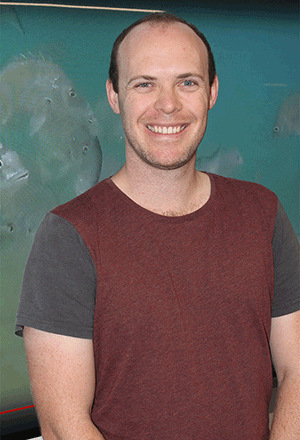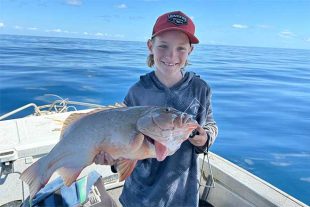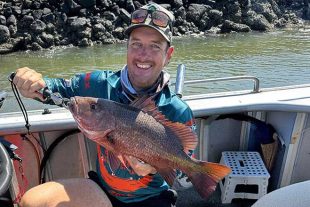 New USC-led research has gone beneath the surface of the Moreton Bay Marine Park, along the coastline from Pumicestone Passage to the Gold Coast, to find the preferred environments of estuarine fish species.
New USC-led research has gone beneath the surface of the Moreton Bay Marine Park, along the coastline from Pumicestone Passage to the Gold Coast, to find the preferred environments of estuarine fish species.
And the results surprised the USC team led by Research Fellow in Coastal and Marine Ecology Dr Ben Gilby. “Our team compared the number and diversity of fish in six estuarine ‘no-take’ areas with that of 16 other estuaries where fishing is permitted,” Dr Gilby said. “We found that the ‘no-take’ areas were falling well short of protecting fish that consumers like to catch and eat, such as bream, whiting and mullet.
“Paradoxically, fish targeted by anglers were more abundant outside the six protected reserves, in the estuaries where fishing was allowed. “The only fish consistently found in greater numbers inside the ‘no-take’ reserves were species that people did not consume, such as toadfish and catfish.”
The six dedicated estuarine reserves were at Pumicestone Passage (Bribie Island, Tripcony Bight), Redcliffe, Nundah, Pimpama and Coomera. Dr Gilby, a fish ecology expert who lectures in Animal Ecology at USC’s campus on the Sunshine Coast, said the study’s results initially puzzled the USC marine research team.
“To find answers to this paradox about fish numbers in declared reserves, we examined the habitat features of the protected areas and found two major shortcomings – they were too shallow and they were poorly connected to the main channel or sea. “The reserves appeared to have been chosen mainly to protect mangrove habitat, but they unfortunately lacked sufficient water depth and had large areas drying out at low tide.”
He led the study with USC colleagues Animal Ecology Lecturer Dr Andrew Olds and Professor of Marine Science Thomas Schlacher, USC PhD student Nicholas Yabsley, Healthy Land and Water’s principal scientist Dr Paul Maxwell and Griffith University’s Professor Rod Connolly. Their paper, ‘Enhancing the performance of marine reserves in estuaries: Just add water,’ was published recently in the journal Biological Conservation.
Dr Gilby said the joint study broke new ground in identifying the environmental factors contributing to fish biodiversity in estuaries. “It’s sure to be of great interest to anyone who wants more fish in the sea – whether that’s conservationists or recreational or commercial fishers,” he said. “Our results indicate that the effectiveness of reserves can be improved by conserving deeper estuaries which have a diversity of habitats, better water flow and stronger links to the sea.”
The research received funding from the Brisbane-based non-profit organisation Healthy Land and Water and the Sea World Research and Rescue Foundation. “We’re also about to start a similar project investigating the distribution of fish species in estuaries between Hervey Bay and the Livingstone Shire (near Rockhampton), including the Great Sandy Marine Park.”
To see underwater GoPro footage of the bait stations used by researchers to detect fish during the Moreton Bay study, search “USC fish ecology research” on You Tube or go to www.youtube.com/watch?v=b6JfhLU1u30&list=PLuqEMOpC4MAhOXtGtPuSueOW7gCoAytAG&index=9
To read the journal paper, go to http://hlw.org.au/u/lib/mob/20170418160633_b21440b8a718ce8a0/gilby-et-al-2017-biological-conservation.pdf
no-take areas no-take areas no-take areas no-take areas no-take areas
 Bush ‘n Beach Fishing Magazine Location reports & tips for fishing, boating, camping, kayaking, 4WDing in Queensland and Northern NSW
Bush ‘n Beach Fishing Magazine Location reports & tips for fishing, boating, camping, kayaking, 4WDing in Queensland and Northern NSW









